








Innovative solutions for decarbonizing buildings and enhancing the climate resilience of cities
BEEMind




Consortium
In collaboration with



BEE Group solutions: BEEMind tools





MindCity
MindOpera







Platform for resilient buildings and cities


BEEMind
BEEMind is an AI powered environment that integrates three key pillars:
- Semantic web technologies to make data fully interoperable
- Big data architecture to manage large data volumes,
- A set of intelligent tools to optimize urban environments for energy transition and climate resilience

AI-powered solutions to enhance climate resilience in buildings and urban environments


Global building operations
Modular environment for integrating heterogenous data from commercial buildings and urban areas, aiming to centralize knowledge and provide intelligent solutions to building managers and urban planners
Description
Dashboard administració MindOpera





BEEMind
BEEMind
-
Integration, processing, and visualization of data from cities and large building portfolios
-
AI-powered models to improve climate resilience of cities and buildings and support their energy transition
-
Figuring out specific high-value indicators that connect to climate action and shift to cleaner energy.
-
Evaluation of energy efficiency measures and climate adaption scenarios
Funcionalities
Environmentally Smart
-
Facilitates strategic decision-making in the buildings' operation, and urban planning fields
-
Optimizes resources and processes for large-scale data analysis
-
Improves coordination between technical departments and end users
-
Highly scalable to any city in Spain and to any portfolio of commercial buildings
Benefits
Unlocks powerful data processing solutions for buildings and cities


Platform for resilient: buildings and cities 4.0


BEEMind
-
Integration of heterogeneous data (energy consumption, socio-economic, cadaster, weather, maintenance orders, energy efficiency measures, RES generation, BIM, and SCADA data...)
-
Automatic harmonization of data to facilitate their interoperability (BIGG Ontology, SAREF4BUILDINGS)
-
Generation of multiple indicators at component level (self-consumption, energy indicators, climate KPIs...)
-
Adaptable visualizations for each IT infrastructure
-
AI and Geo AI powered modules for predictive maintenance, buildings energy optimization, urban resilience and energy transition
Functionalitalities BEEMind
One Platform two solutions
It is structured around two main frameworks:
- MindCIty
- MindOpera





Public Administration and Institutions
- Hospitals and healthcare centers.
- Universities and educational centers.
- Cultural, sports, and administrative facilities.
Targets
- Departments of the Autonomous governments with responsibilities for assets, energy, or maintenance.
- Medium and large City Councils aiming to achieve climate mitigation and adapation goals
- Consortiums, Provincial Councils, and supramunicipal bodies with centralized services.
Critical Infrastructure and Public Facilities

- Maintenance and energy services companies.
- Managers of business parks or industrial estates.
- Property administrators
Private Sector with Building Portfolios

BEEMind

Tecnology BEEMind







Ontology based big data architecture


- Orchestrates massive building operation and geospatial urban data in real time.
- AI-powered analytics, and semantic harmonization to drive energy transition, climate action and energy efficient building operation

ENMA
open-source big data architecture developed by BEE Group
G. Mor; J. Vilaplana; S. Danov; J. Cipriano; F. Solsona; D. Chemisana. EMPOWERING, a Smart Big Data Framework for Sustainable Electricity Suppliers. (2018) IEEE Access. vol. 6, pp. 71132 - 71142.
Reference paper
big data architecture
BEEMind-ENMA



-
IoT sensors via Modbus and BACNET protocols
-
Data from renewable generation systems (PV)
-
Satellite meteorological data
-
Real-time energy consumption
-
Maintenance data (CMMS)
-
Integration with SCADA data sources
-
Cadastral data
-
Data from official inventories

MindOpera: Data sets used
Interoperable web semantic frameworks




The ontology at the core of our solutions
Applied semantic web technologies:
Understanding and organizing data is as important as the algorithms themselves

Massive data integration
Processes:
- Renaming
- Unit conversion
- Data cleaning
- Post processing and alignment
- Virtual meters and Key Performance Indicators (KPIs)


- Standardized schema (OWL/RDF Turtle) and shared vocabulary for describing IoT devices, buildings and urban areas, enabling interoperability.
- Supports planning, operations, and sustainability with harmonized data and KPI framework for measurement and benchmarking.
BIGGONTOLOGY:
Semantic reference ontology
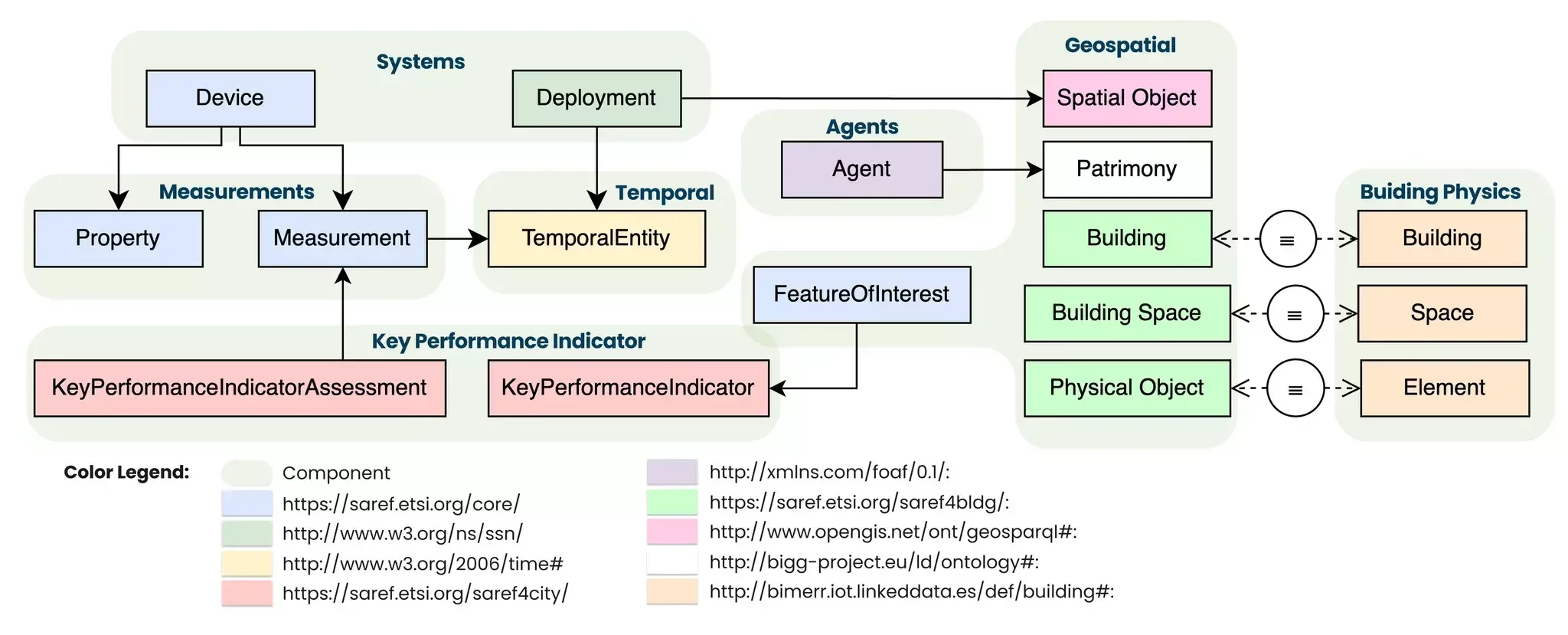
- J. M. Broto, J. Cipriano, G. Mor, O. Gavaldà, S. M.-Verki, U. Eicker (2025). An interoperable ontology-based information model for better integration of building physics and IoT data analytics models. IEEE/ACM 7th International Workshop on Software Engineering Research & Practices for the IoT (SERP4IoT).
- E. Martínez-Sarmiento; J. M. Broto; E. Gabaldon; J. Cipriano, R. García; S. Danov (2024).Linked Data Generation Methodology and the Geospatial Cross-Sectional Buildings Energy Benchmarking Use Case. Energies 2024, 17(12), 3006
Reference papers
Interoperable web semantic frameworks
-
IoT sensors via Modbus and BACNET protocols
-
Data from renewable generation systems (PV)
-
Satellite meteorological data
-
Real-time energy consumption
-
Maintenance data (CMMS)
-
Integration with SCADA data sources
-
Cadastral data
-
Data from official inventories

MindOpera: Data sets used




The ontology at the core of our solutions
Understanding and organizing data is as important as the algorithms themselves

Processes:
- Renaming
- Unit conversion
- Data cleaning
- Post processing (Ts alignment)
- Virtual meters o Kpi Calculations


Reuse
-
saref, s4blg, s4city, s4agri:
- buildings, devices
-
ssn:
- systems, deployments
-
geosp:
- geolocation
-
qudt:
- units
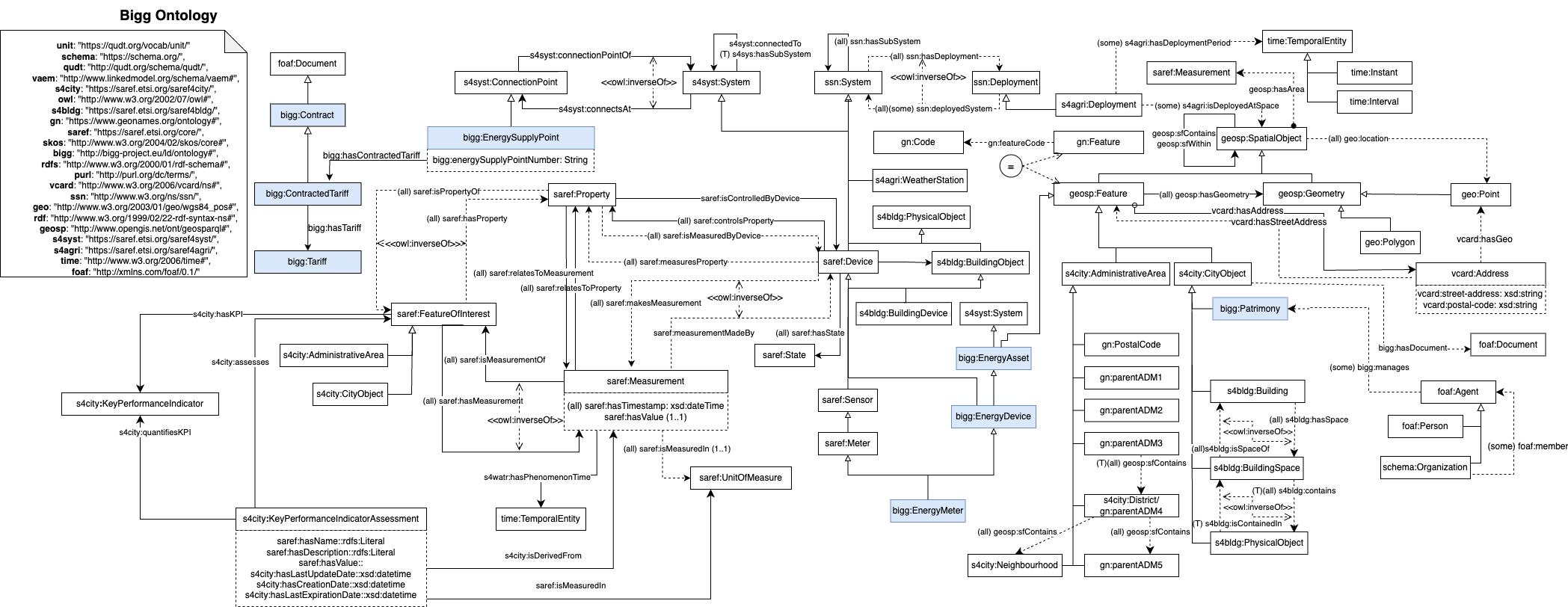
Interoperable web semantic frameworks
MindCity







BEEMind tools : MindCity
High resilient cities in practice
This solution helps municipalities and organizations go digital and manage their data effectively on a local level.
It is a key tool for smart cities, energy planning, adapting to climate change, and making decisions about urban retrofitting
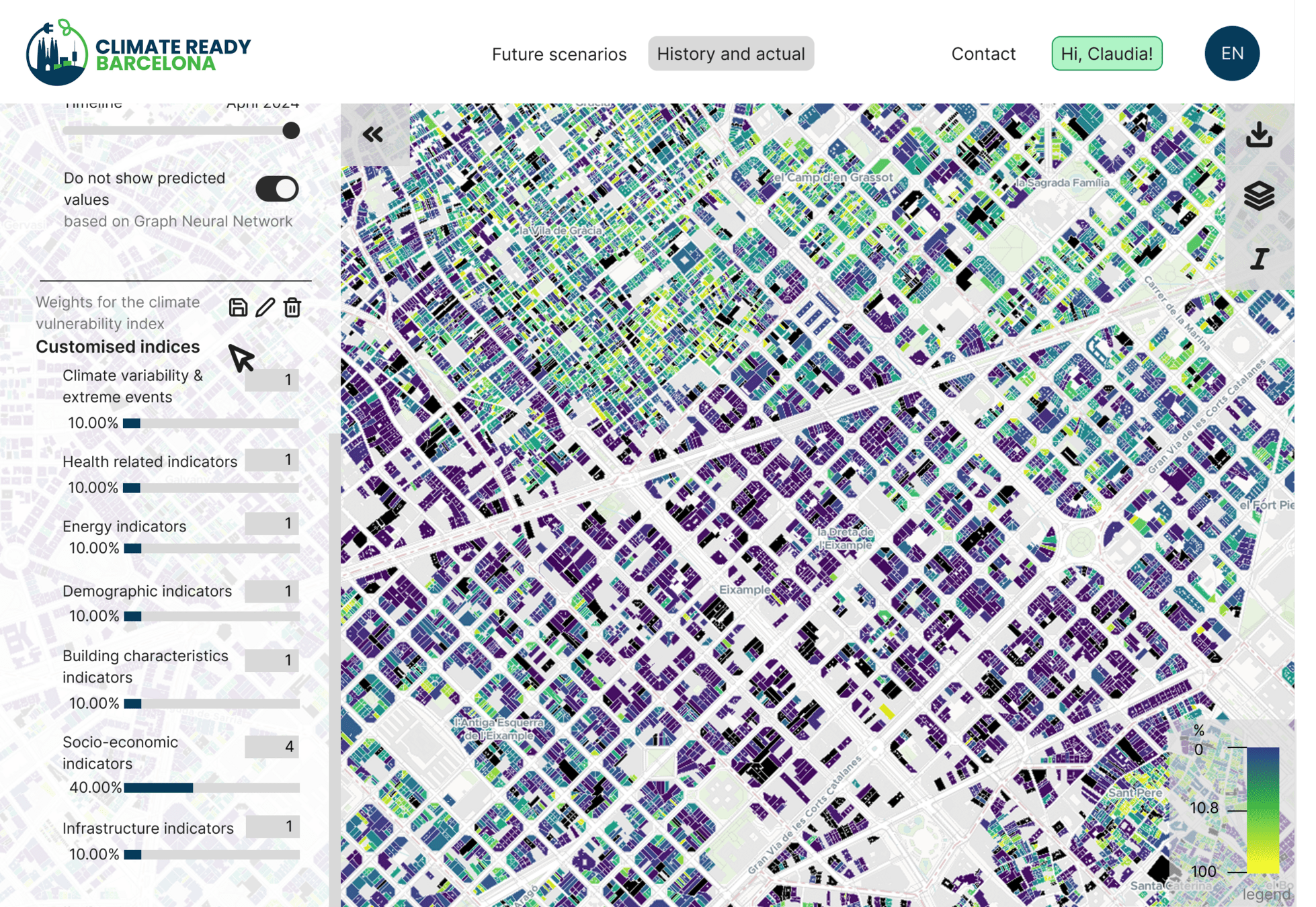
What does it do? It checks out KPIs for buildings and helps planning for energy transition and climate change adaptation:
-
City microclimate model
-
Rates how buildings are vulnerable to climate issues
-
Forecasts energy retrofitting and adaptation strategies
-
Sends heat wave communications—4 days ahead
-
Supports designing urban green spaces and shelters


Description
Data integration Across Various Scales



3. Data at building level
2. Data at census code level
1. Data at postal code level


BEEMind tools : MindCity
AI powered geo models

We develop machine learning and Graph Convolutional Neural Network (GCNN) models
To enable microclimate assessment and learning patterns from geo-structured data (buildings, streets, use, energy, etc).
Estimation of KPIs for all buildings without data
It is a digital landscape, a dynamic knowledge graph that brings urban exploration to life.
Definition of future climate mitigation and adaptation scenarios



BEEMind tools : MindCity
Data sources


Massive data ingestion and integration
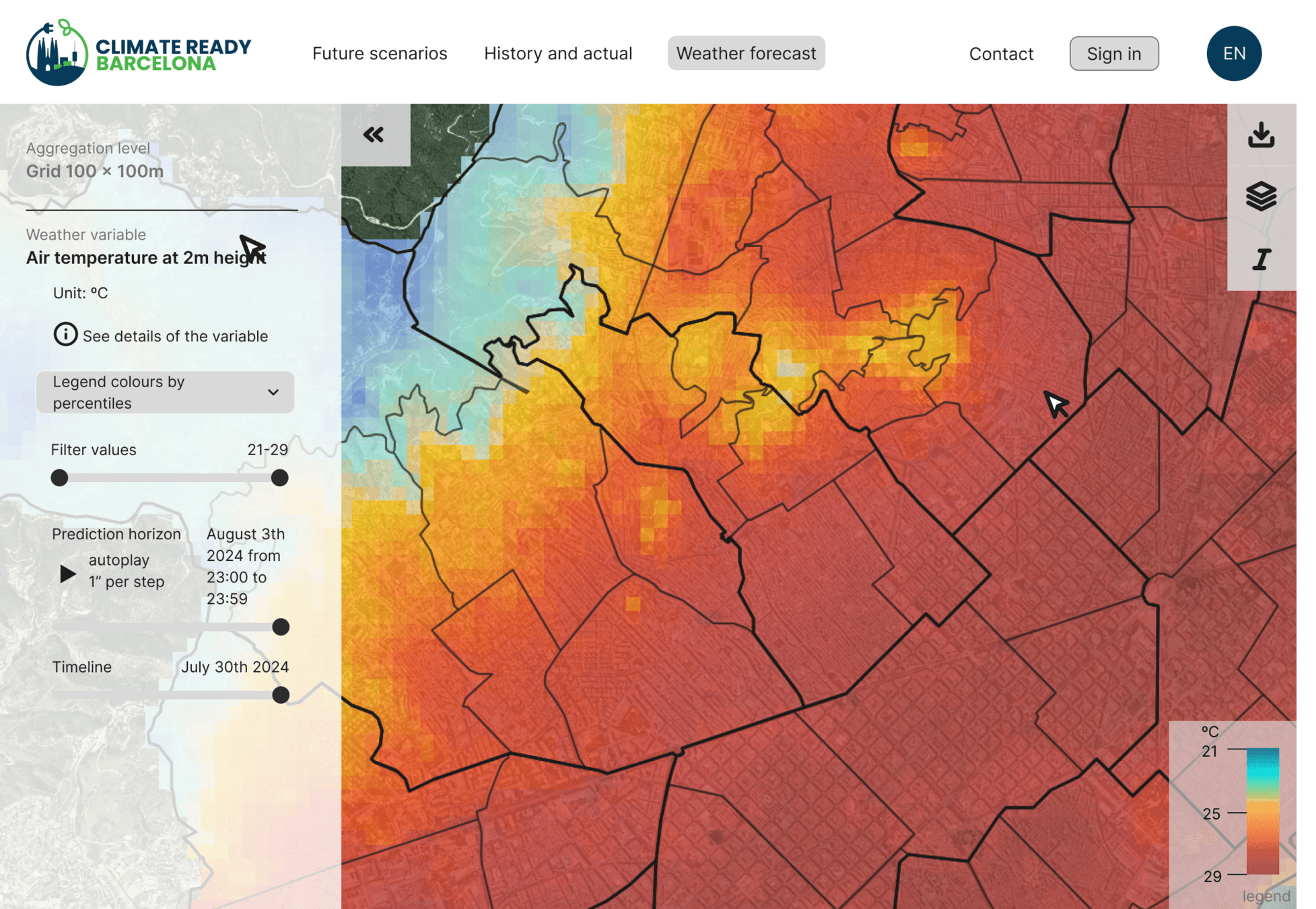
61,000
1 Milion
200.000
Buildings


Households
EPC

10,222
3 Milion
20.000
Zones (microcli-mate model)


KPIs visualized
Heat waves warnings and tips

1,050

Households
BEEMind tools : MindCity
BEEMind tools : MindCity
-
Integration, processing, and visualization of large amounts of urban data at the building level
-
AI powered models to improve cities and make them more resilient against extreme weather events.
-
Figuring out specific geospatial indicators that connect to climate action and the shift towards cleaner energy.
-
Evaluation of vegetation and urban climatology scenarios
Funcionalities
Cities 4.0: Environmentally Smart
-
Facilitates strategic decision-making in the energy, climate, and urban planning fields
-
Optimizes resources and processes for large-scale city data analysis
-
Improves coordination between technical departments and citizen interaction
-
Highly scalable to any city in Europe
Benefits


BEEMind tools : MindCity
Use cases
-
Optimizes resources and processes
For large-scale analysis of geo referenced urban data -
Improves coordination
Between municipal technical departments and citizen interaction -
High scalability
For any city in Spain
-
Climate vulnerability map
Detect vulnerable areas based on large number of KPIs -
Support buildings energy retrofitting
Identify and prioritize buildings with the greatest needs -
Actions to adapt to heat waves
Optimizing climate shelters, better climate communications and greening
Impacts


Cities 4.0: Environmentally Smart
Case Study: Climate Vulnerability Map of Barcelona









Vulnerability map: Climate-Ready BCN
Source: ICLEI Action Fund 2.0
Budget: €1M
Objective: Support citizens and public authorities in adapting to extreme climate events and reducing energy poverty
Implemented: From May 2023 to December 2025






Climate Vulnerability in Barcelona at building level
The Climate Vulnerability Map of Barcelona is a geospatial analysis tool designed to identify the buildings most at risk during extreme heat events.
It evaluates key performance indicators (KPIs) for buildings and supports climate change planning
It provides an assessment of all residential buildings in Barcelona(61,000)


What is it?

CVI
How we estimate the Climate Vulnerability Index (CVI)
Vulnerability index to asses heat wave resilience
Climate vulnerability is typically framed within three key dimensions defined in the IPCC's Third Assessment Report (Intergovernmental Panel on Climate Change) in 2001:
Exposure
Sensitivity
Adaptive capacity
Although most studies classify indicators using these three categories, our index introduces additional levels to provide a more nuanced analysis while remaining aligned with the traditional framework.



Climate variability and extreme events
- Track changes over time through indicators such as temperature, precipitation, and vegetation cover. Local data helps assess risks related to heatwaves, droughts, and floods.
Energy indicators
- Explore energy use patterns (gas and electricity consumption). Indoor temperature data is crucial for identifying households at risk during extreme heat events.
Building characteristics
- Assess features such as age, use, and size to understand their impact on energy use, indoor comfort, and structural vulnerability.
Indicators groups (KPIs)
Vulnerability map




Infrastructure indicators
Assess the availability of essential public services (schools, climate shelters, social housing) and the strength of social networks to understand community support capacity.
Health indicators
Analyze the relationship between climate and health outcomes to identify vulnerable populations and prepare healthcare systems.
Demographic indicators
Not all groups are equally vulnerable. Analyzing factors such as gender, age, income, migration status, and unemployment allows for the development of more detailed CVIs.
Socioeconomic indicators
Understand urban resilience through factors such as housing costs, energy poverty, household debt, and gaps in social protection, which worsen during economic crises.

Vulnerability map
Indicators groups (KPIs)






Climate vulnerability Index (CVI)
-
Data preprocessing – Select input data to calculate the indicators.
-
Framework selection – Determine which indicators positively or negatively affect the CVI.
-
Granularity definition – Select the spatial scale.
-
Normalization & weighting – Harmonize indicators and assign weights.
-
Aggregation – Combine indicators into groups to obtain a final value.
⚠️ Challenge: Each study adapts its CVI to its specific context and priorities.
CVI Construction
Vulnerability map

Data sources & harmonization







- Cadastral (INSPIRE + CAT Files). Building characteristics, horizontal distribution. Inferred: shadows from nearby buildings, wall types and orientations, patios, administrative metadata (addresses, postal codes..)
- Energy Efficiency Certificates. EPCs at dwelling level, including information about envelope characteristics and HVAC systems.
- Real gas and electricity consumption readings (monthly at building level, hourly at postal code level)
- Meteorological data (ERA5LAND, and UrbClim project).
- Socioeconomic indicators (Census, income atlases, cost of living...).
- Climate Shelters. Including characteristics and opening timetables
- Administrative layers
- Normalised Difference Vegetation Index (NDVI). An aggregation of a buffer around each building was computed
- Tourism-related establishments
- Health data. Mortality and morbidity due to extreme heat events
Main data sources

Heterogenous data ingestion

Massive data integration

Knowledge graph
Knowledge graph: Structured representation that connects geospatial data with various entities and their relationships, enabling better analysis and reasoning about geographic information.



Modelling








-
Overall predictive model: heterogenous temporal graph
MindCity: Modelling
Vulnerability map

Graph Convolutional Neural Network (GCNN) models
To enable learning patterns, fill knowledge gaps and predict scenarious from geo-structured data



- Weather downscaling microclimate model
Complementary models
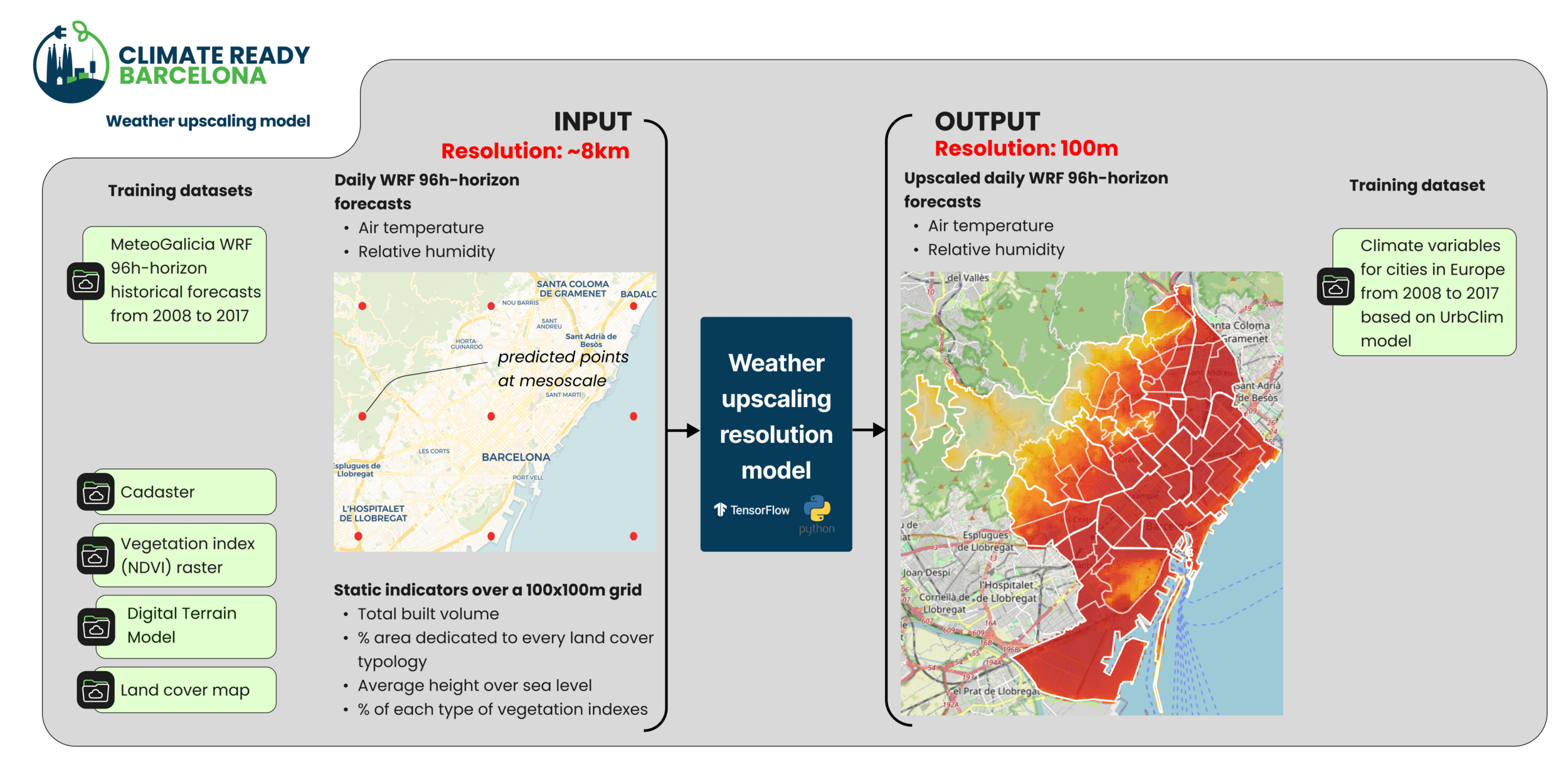
Weather
Cat boost decision tree



1.1. Heat waves prediction and communication
Complementary models
Weather
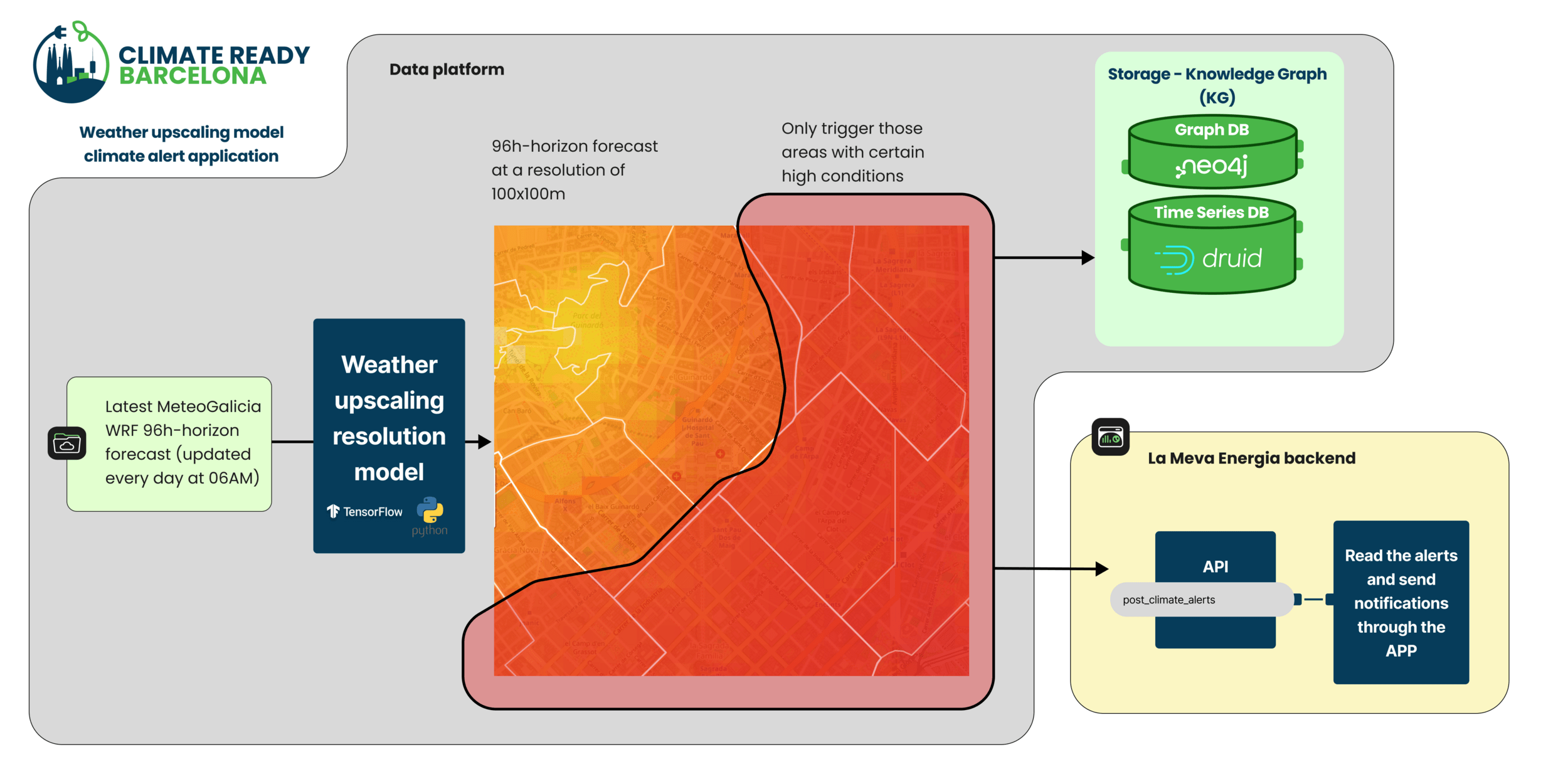


-
Thermal demand models of buildings
Simulation of the thermal energy demand of 37,000 residential buildings.
The simulation engine is based on Reduced Order Grey Box Models (RC models) trained with TRNSYS simulations:
- Building-level predictions for space heating and cooling
- Total energy needs under 3 typologies and 17 archetypes and 5 indoor set point temperatures
- Predicting 5 retrofitting scenarios and 2 HVAC systems
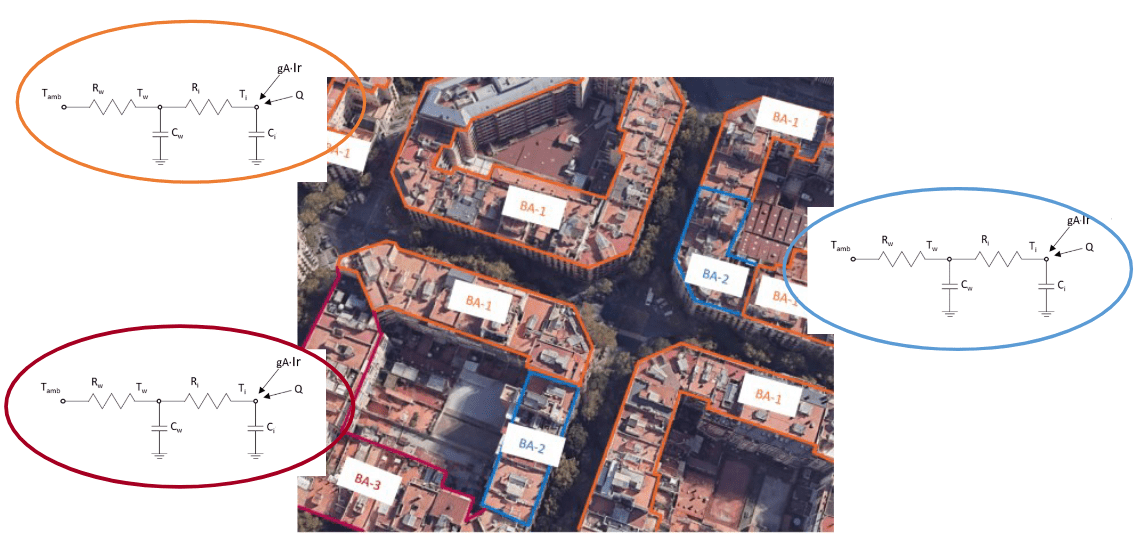
Complementary models
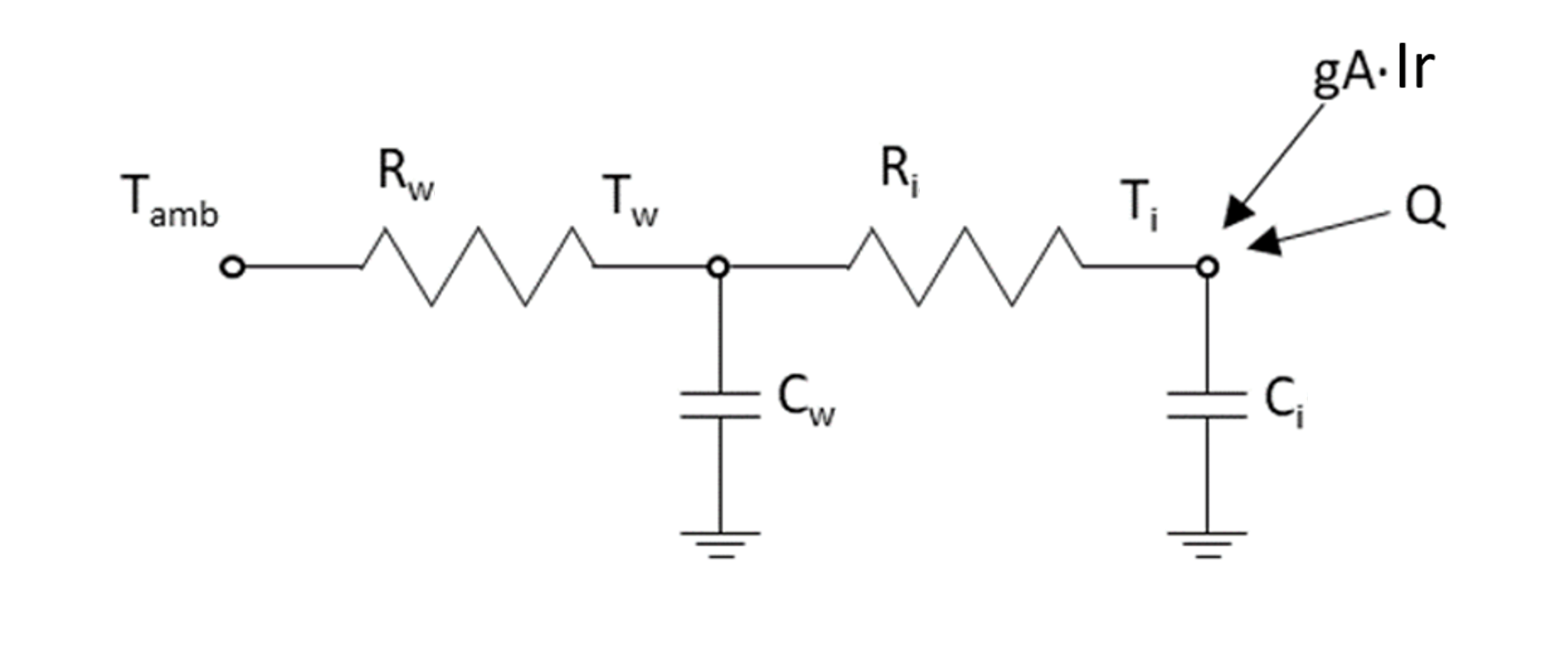

big data IT architecture: Geospatial ENMA

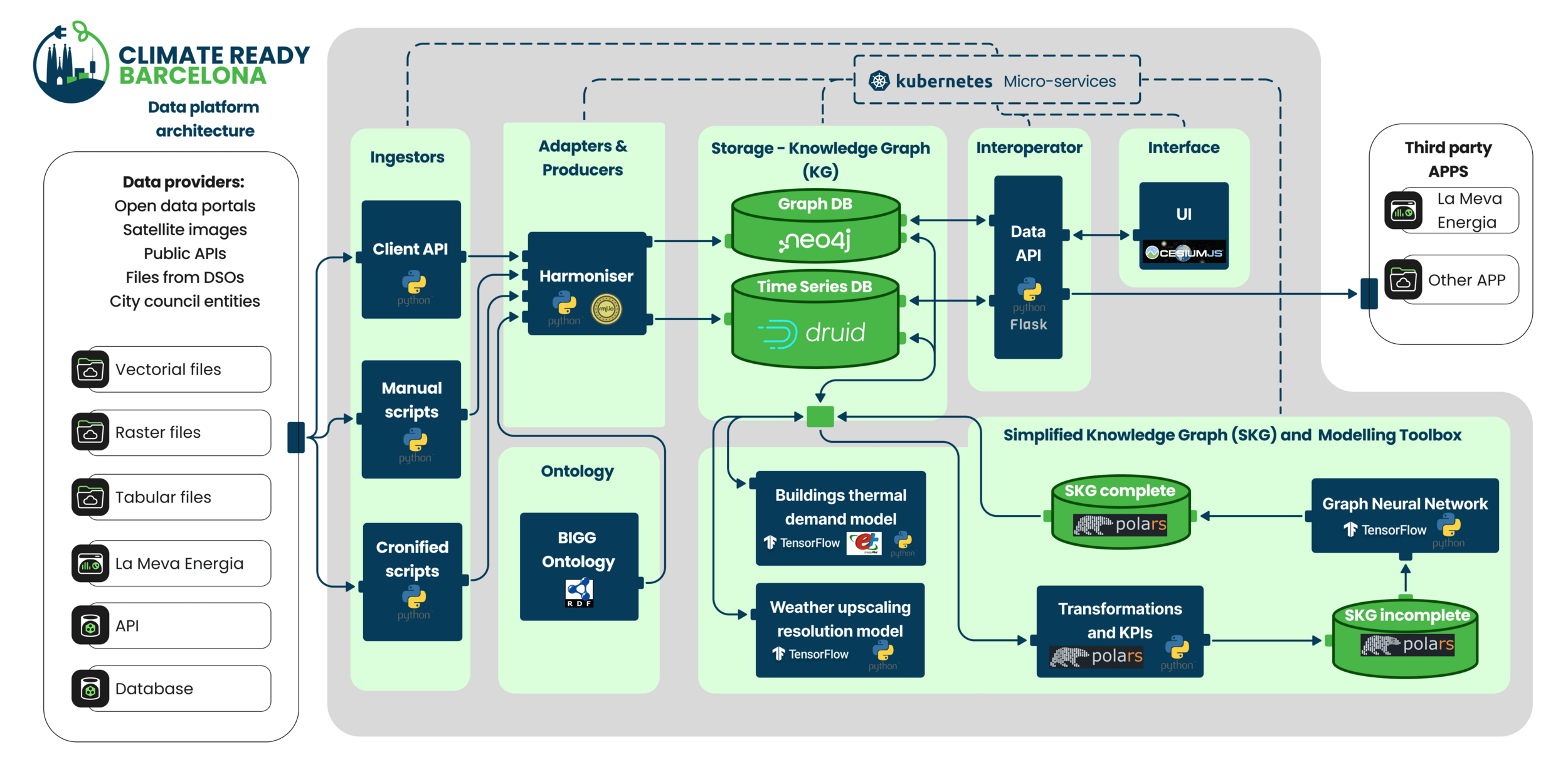


Interactive visualization







MindCity: Climate Vulnerability Map Visualization
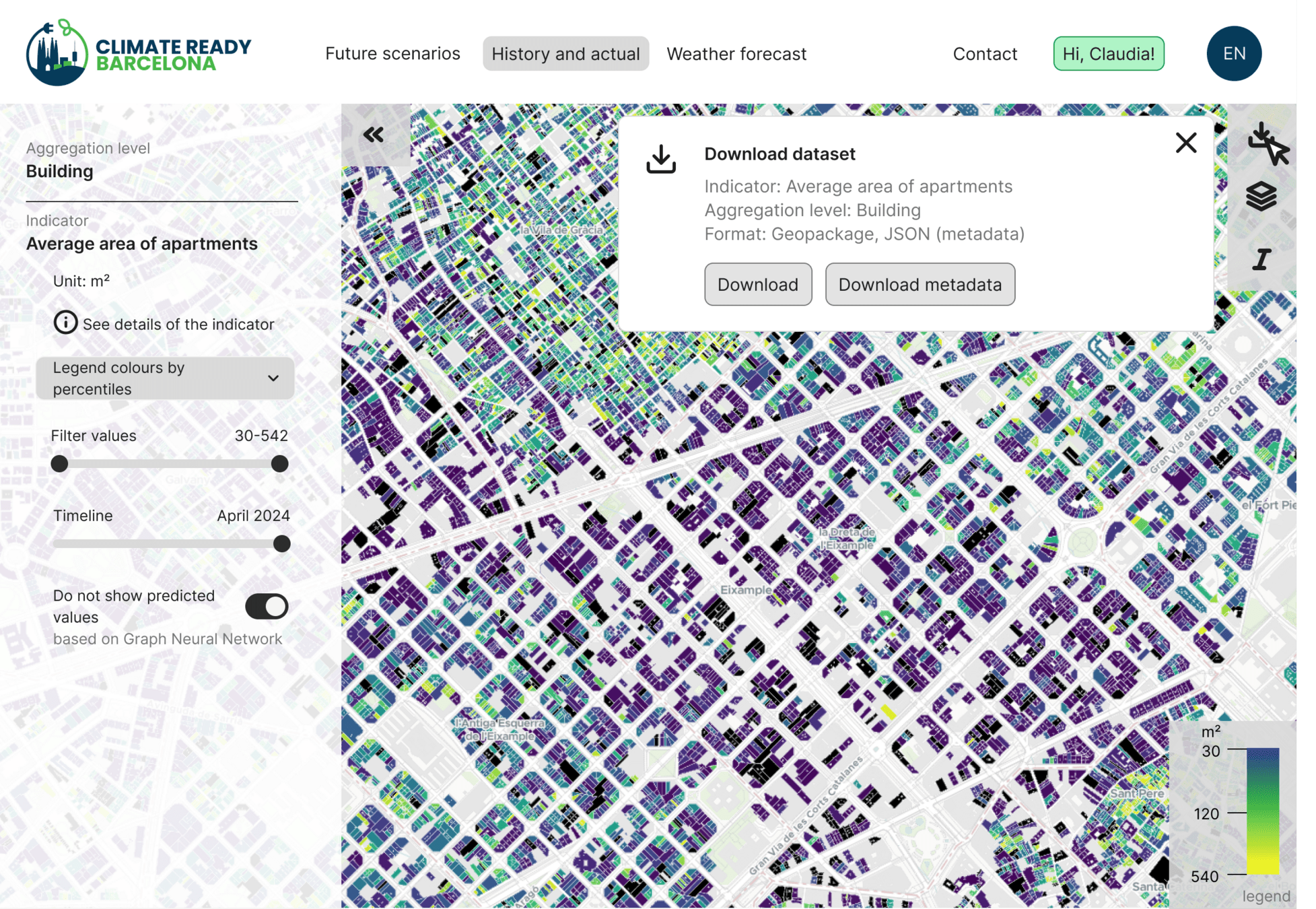
Export and data visualization
Vulnerability map
Vulnerability map
https://maps.climatereadybcn.eu/


Index evolution by streets and buildings

Queries and forecasts
Vulnerability map
MindCity: Climate Vulnerability Map Visualization


Mind Opera









Operation
Description

Dashboard administració MindOpera
Mind Opera is a modular solution designed for managers of public and private buildings with multiple data sources and operating systems:



harmonizes
Integrate
analyzes
Applying artificial intelligence models to optimize operations and anticipate incidents.
Consumption, maintenance, and generation data
in real time
BEEMind tools : MindOpera
Monitoring and predictive control
Energy optimization
Operation


-
Modular cloud architecture
-
Automatic aggregation and validation
-
Multi-building supervision
-
Anomaly detection
-
Predictive maintenance
-
Comprehensive equipment monitoring
-
Semantic standardization
-
Real-time intelligence


BEEMind tools : MindOpera


-
Integration of heterogeneous operational data (consumption and temperature, maintenance orders, energy efficiency measures, RES generation, cadastre, BIM, and SCADA data)
-
Automatic harmonization of records from multiple sources (Modbus, Bacnet, DEXMA, etc.)
-
Generation of operational indicators (self-consumption, PR, CO₂ avoided, etc.)
-
Adaptable visualizations for each infrastructure
-
AI modules focused on predictive maintenance, control, and energy optimization
Functionalitalities
Benefits
-
Orchestration and harmonization of large volumes of operational data from buildings
-
Improves overall management of equipment and commercial buildings
-
Reduces supervision time and generates smart alerts
-
High interoperability and communication with management and maintenance systems
-
Suitable for managers of public and commercial building portfolios
Operation of Buildings 4.0
BEEMind tools : MindOpera


Value proposition
Making easy energy efficiency operation....
MindOpera connects, organizes, and optimizes all your energy data on a single platform.
- Reduction of supervision time and human errors
- Improvement of service continuity and failure anticipation
- Optimization of energy efficiency at a portfolio scale
- Interoperable communication with existing management systems
- High scalability with the incorporation of all buildings
MindOpera





Easy


Management
Integration




Some KPI
Infraestructures.cat


MindOpera: Data Orchestrator
MindOpera: Data Orchestrator


63.258 zones
1.526
Equipments

129.205 assets

1.302.786
workOrders


12.400 BMS device

8.526 Monitoring device


Environmentally Smart


Use cases
-
Centralized management of technical systems
-
Automatic generation of KPIs and operational alerts
-
Continuous monitoring of HVAC, lighting, DHW, and ventilation systems
-
Monitoring of compliance with thresholds of the different records
-
-
Early detection of anomalies in technical systems
-
Identification of inconsistencies in electricity generation/export or device behavior
-
Real-time performance analysis with interpolation and timestamp control
-
Efficient operation through reduced downtime and failure anticipation
Value
Improves service continuity and prevents penalties due to malfunctioning
Managment costs
Connection and quick action for maintenance service
BEEMind tools : MindOpera
BEEMind tools : MindOpera
-
Monitoring in multi-building or multi-company scenarios
-
Capacity for progressive data growth and aggregated monitoring
-
Performance tracing and calculation of KPIs such as PR, CO₂ avoided.
-
-
Monitoring and control of contracts or public tenders
- New control aspects of maintenance tenders: presence, energy efficiency, system availability...
- Monitoring of indicators created for contract management


Environmentally Smart
Use cases
Value
High scalability
- Integrate assets and sites in phases (plug-and-play with BMS/SCADA/IoT), without redoing integrations each time.
Capex Protection
- Avoids premature replacements of hardware/systems.
- Maximizes production and facilitates the justification of subsidies.
Case studies: iCAT and ICAEN









The Orchestrator of Infraestructures.cat





MindOpera: Data Orchestrator
Deploy a data orchestration infrastructure for public buildings with monitoring and remote-control systems, integrating structural, operational, and energy data.
Infraestructures.cat
Integrator of all equipment data under the direct management of Infraestructures.cat:
-
Real-time data for optimal operation of hundreds of buildings
-
Data provision to diferent internal and external actors. (Energy department, Maintenace department, clients, etc)
-
Predictive maintenance, anomaly detection, consumption and generation forecasting
- Infraestructures.cat
- CIMNE-BEE Group


Actions
Goals
Main actors
Massive data integration
ENMA in action
Ingestion processes
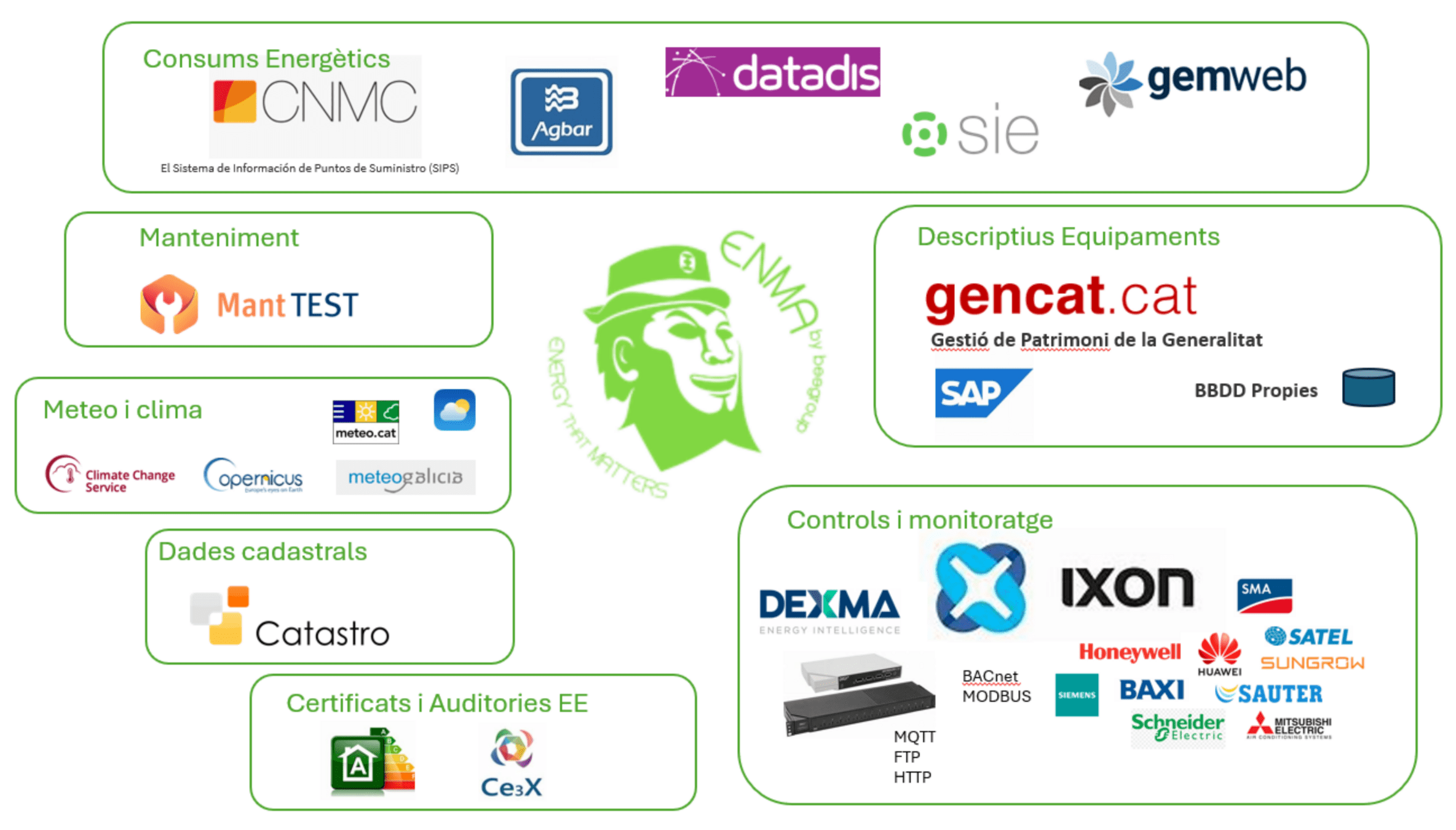
BEEMind: Data ingestion
- Executed manually or periodically
- Reading from websites, files, external databases, or APIs.
- Implemented using Python scripts.
Dades socio-econòmiques


Dades urbanes obertes





Actualització continua dels datasets


Infraestructures.cat
Technology used
This project uses ENMA as the basic infrastructure for BEEMind:
-
Kubernetes enables the management and scalability of deployed services, ensuring high availability and efficient application execution.
-
Apache Kafka serves as a distributed messaging platform, enabling reliable and real-time transmission of large volumes of data between the system's components.
Direct management: Data control and analysis
The main processes are organized into four distinct stages:
A. Data collection
B. Data storage
C. Static harmonization
D. Time series processing
Model intellligence
-
Predictive maintenance
-
Generation forecasting
-
Predictive self-consumption balancing
MindOpera: Data Orchestrator




Home
Admin Dashboard
MindOpera: Data Orchestrator
The tool


Monitoring: Tracking KPIs
MindOpera: Data Orchestrator
Control and Maintenance




Monitoring: Tracking KPIs



MindOpera: Data Orchestrator
Control and Maintenance


Monitoring: Tracking KPIs
MindOpera: Data Orchestrator
Control and Maintenance





SIME-ICAEN





Integrate and visualize the energy data of all Generalitat facilities (10,000) and support energy savings through data intelligence:
-
Comparison of energy indicators
-
Evaluation of the energy performance of each facility
-
Verification of savings from Energy Efficiency Measures
-
Planning of energy efficiency actions
Institut Català d'Energia
The project
MindOpera: Energy Monitoring System – SIME
Seguiment i avaluació del Pla d’Estalvi Energètic dels edificis de la Generalitat de Catalunya.
Goals
Equipment supervision
Monitoring and control of supplies
Monitoring and
control of certificates and audits
Global energy supervision
Monitoring of energy efficiency measures
Monitoring of projects and actions
Data provision to external services
Data verification from different sources
Data provision to external services


Massive comparison: Energy benchmarking

Institut Català d'Energia
Centralized management



MindOpera: Energy Monitoring System – SIME
Energy Analytics
Energy Efficiency Measures
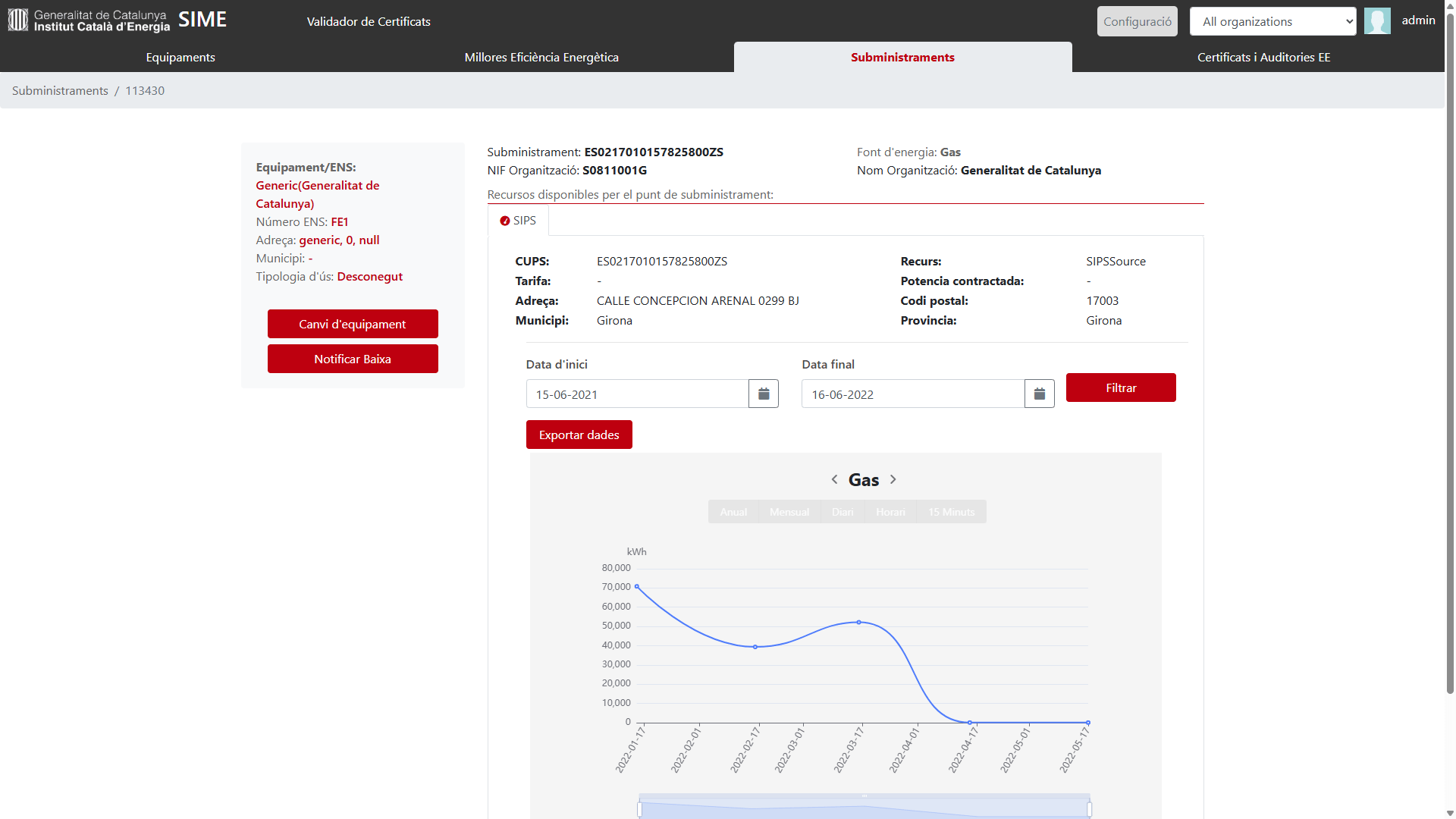
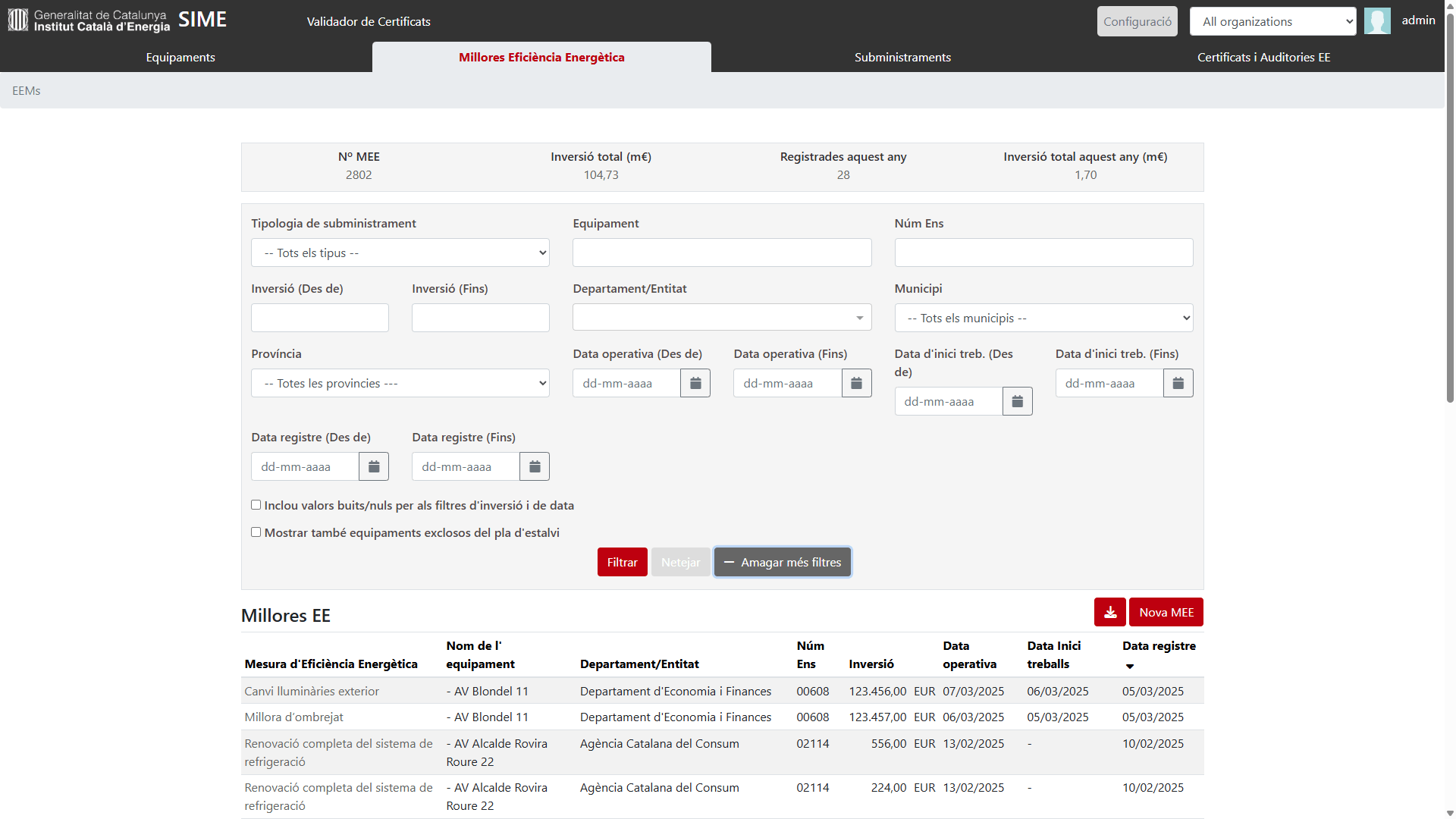


Institut Català d'Energia

MindOpera: Energy Monitoring System – SIME


1. Longitudinal benchmarking

Estimation of the balance point temperature for heating and cooling periods
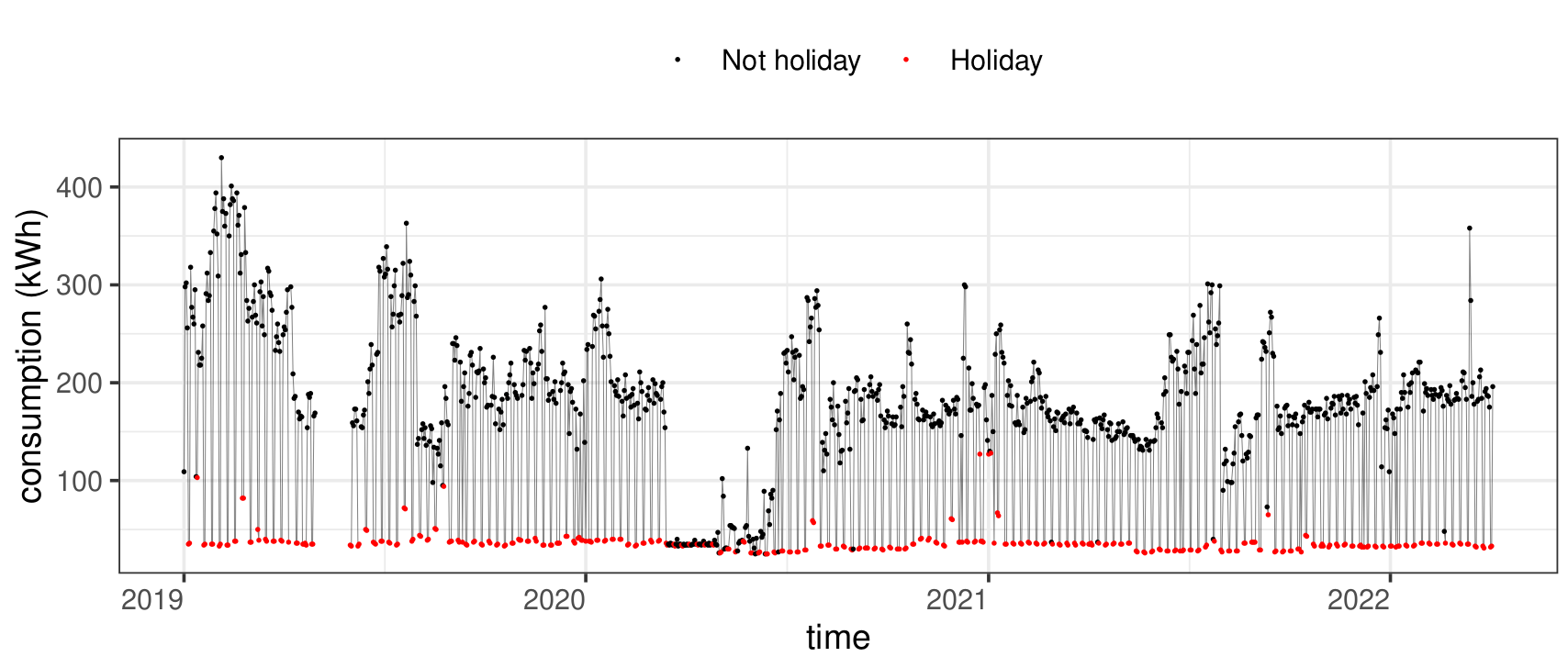
Detection of holiday periods
MindOpera: Energy Monitoring System – SIME
What does it do?
Analyzes a building’s energy performance over time to detect trends and assess potential energy faults.
Data used:
-
Time series of energy consumption
-
Historical climate data
-
Calendar data
Objectives:
-
Detect changes in energy indicators of individual buildings over time


2.1. What does it do?
Compares the energy performance of multiple buildings at a specific moment to identify inefficient or exemplary performance.
2.2. Data used:
-
Harmonized KPIs per building
-
Static data: use, surface area, climate
-
Typological classification of buildings
2.3. Objectives:
-
Identify best practices and critical buildings
-
Prioritize actions based on comparative performance
-
Generate benchmarks for new projects
-
Cross-sectional benchmarking
Identification and quantification of discrepancies between actual and historical energy consumption

Estimation of the balance temperature for heating and cooling periods
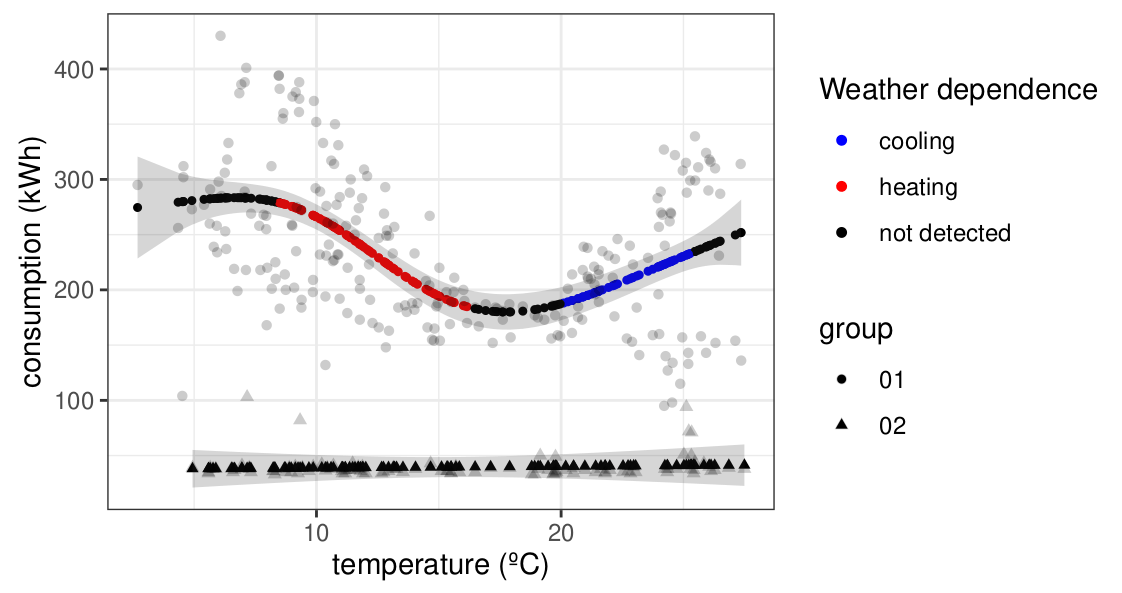
MindOpera: Energy Monitoring System – SIME


What does it do?
Evaluates the effectiveness of EEMs and energy retrofitting actions
Assessed over 400 public buildings in the Zlin Region (Czech republic) and 4,000 public buildings of Generalitat de Catalunya
Data used
-
Harmonized time series of energy consumption
-
Technical information from systems (SCADA, CMMS, IoT sensors)
-
Hourly climate data
-
Data base of applied EEMs with their application date


3. Assessment on Energy efficiency Measures (EEMs)
MindOpera: Energy Monitoring System – SIME


Thank you





Jordi Cipriano
Director of Innovation Unit BEE Group
cipriano@cimne.upc.edu